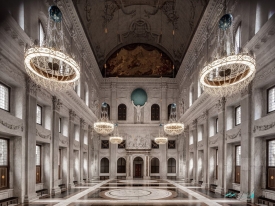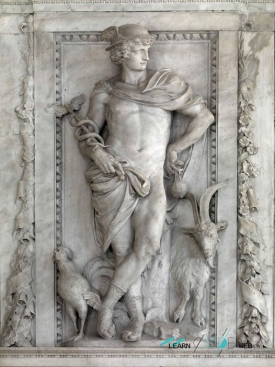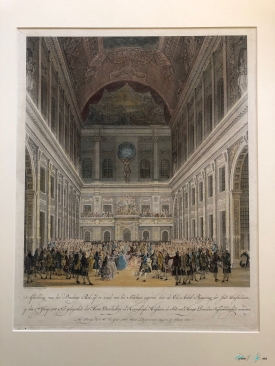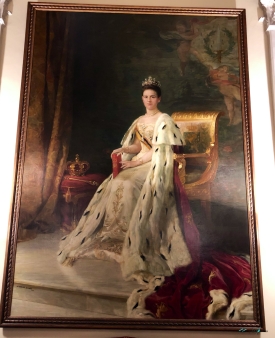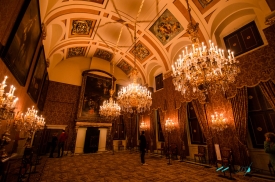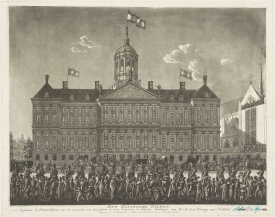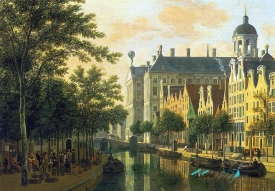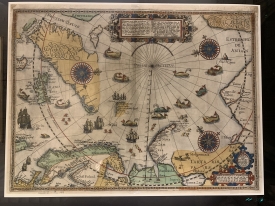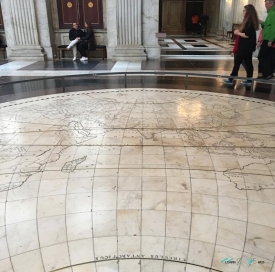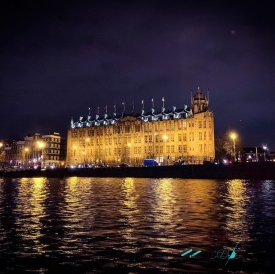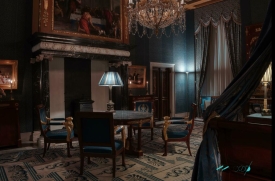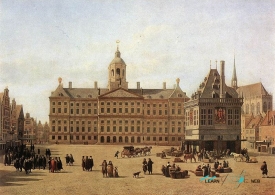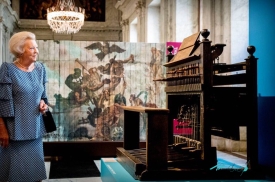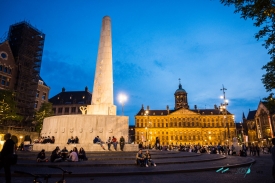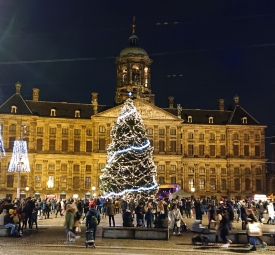On Dam Square, in the center of Amsterdam, is the Royal Palace of Amsterdam (Paleis op de Dam), one of the four royal palaces of the Kingdom of the Netherlands. His current sovereign, Willem-Alexander Ferdinand van Oranje-Nassau, inhabits it with his family when they are in the city, becoming the official residence of the monarchy. Royals usually hold New Year's receptions, gala dinners and award ceremonies at its facilities, such as the renowned Erasmus Prize.
The Palace is one of the largest and best preserved buildings in old Amsterdam, as a living testimony to the Dutch Golden Age, when the Netherlands became a sea and trading power in Europe and the world. It was originally built, not as a palace, but as the seat of the city council.
The town hall was built on a scale never before seen in Europe. It became the largest non-religious building in the ancient world. The building had to reflect the wealth and prestige of the city of Amsterdam. The construction cost 8.5 million guilders, a huge amount at the time.
The Palace was designed by the architects Jacob Van Campen and Daniël Stalpaert. Construction began in 1648 and ended on July 20, 1655. Being a project developed and financed by the city of Amsterdam, to be the seat of its City Council. Its original use changes in 1808, when, during the Napoleonic wars, Napoleon Bonaparte creates the Kingdom of Holland, as a puppet kingdom, imposing his brother, Louis Bonaparte, as sovereign. It was during the brief reign of Brother of the Great Corsican that the town hall became his official residence, transforming it into a palace, which has stood ever since. The architect J.T. Thibault oversaw its redecoration in the Imperial style. At the fall of Napoleon, and the re-establishment of the Orange-Nassau dynasty, it remained the official residence of the monarchy.
The Palace is open to tourism, attracted by its facilities and furniture that has been preserved since the 17th century. The center of the town hall is the citizens' hall. The Civic Hall is the largest room in the palace, where the universe is represented in miniature. On the floor are marble maps of the eastern and western hemispheres with the northern starry sky in between. Citizens of the 17th century crisscrossed the world here, so to speak, just as Dutch merchants and sailors actually did.
Above the entrance to the galleries, the elements 'Earth', 'Water', 'Air' and 'Fire' are represented in the arches. In the 17th century it was thought that the universe was made up of these four elements. The large statues on the cornice are the casts for the bronze figures on the pediments of the east and west façades. They represent: 'Peace' (east), 'Caution' (southeast), 'Justice' (northeast), 'Atlas' (west), 'Surveillance' (southwest), and 'Modernity' (northwest).
The palace is a living testimony to the grandeur of the Golden Age. Visitors can admire magnificent paintings, fine sculptures, giant chandeliers, marble floors, furniture from different historical periods, as well as traveling exhibitions every year.
Between 2005 and 2009 the interior of the palace was restored. During this time the palace was closed to the public. The restoration also involved the removal of asbestos and the replacement of various technical installations. The guest rooms have been modernized and renovated. From 2009 to 2012 the exterior was also renovated and the original white color of the stone facade was restored.
The Palace is one of the largest and best preserved buildings in old Amsterdam, as a living testimony to the Dutch Golden Age, when the Netherlands became a sea and trading power in Europe and the world. It was originally built, not as a palace, but as the seat of the city council.
The town hall was built on a scale never before seen in Europe. It became the largest non-religious building in the ancient world. The building had to reflect the wealth and prestige of the city of Amsterdam. The construction cost 8.5 million guilders, a huge amount at the time.
The Palace was designed by the architects Jacob Van Campen and Daniël Stalpaert. Construction began in 1648 and ended on July 20, 1655. Being a project developed and financed by the city of Amsterdam, to be the seat of its City Council. Its original use changes in 1808, when, during the Napoleonic wars, Napoleon Bonaparte creates the Kingdom of Holland, as a puppet kingdom, imposing his brother, Louis Bonaparte, as sovereign. It was during the brief reign of Brother of the Great Corsican that the town hall became his official residence, transforming it into a palace, which has stood ever since. The architect J.T. Thibault oversaw its redecoration in the Imperial style. At the fall of Napoleon, and the re-establishment of the Orange-Nassau dynasty, it remained the official residence of the monarchy.
The Palace is open to tourism, attracted by its facilities and furniture that has been preserved since the 17th century. The center of the town hall is the citizens' hall. The Civic Hall is the largest room in the palace, where the universe is represented in miniature. On the floor are marble maps of the eastern and western hemispheres with the northern starry sky in between. Citizens of the 17th century crisscrossed the world here, so to speak, just as Dutch merchants and sailors actually did.
Above the entrance to the galleries, the elements 'Earth', 'Water', 'Air' and 'Fire' are represented in the arches. In the 17th century it was thought that the universe was made up of these four elements. The large statues on the cornice are the casts for the bronze figures on the pediments of the east and west façades. They represent: 'Peace' (east), 'Caution' (southeast), 'Justice' (northeast), 'Atlas' (west), 'Surveillance' (southwest), and 'Modernity' (northwest).
The palace is a living testimony to the grandeur of the Golden Age. Visitors can admire magnificent paintings, fine sculptures, giant chandeliers, marble floors, furniture from different historical periods, as well as traveling exhibitions every year.
Between 2005 and 2009 the interior of the palace was restored. During this time the palace was closed to the public. The restoration also involved the removal of asbestos and the replacement of various technical installations. The guest rooms have been modernized and renovated. From 2009 to 2012 the exterior was also renovated and the original white color of the stone facade was restored.



